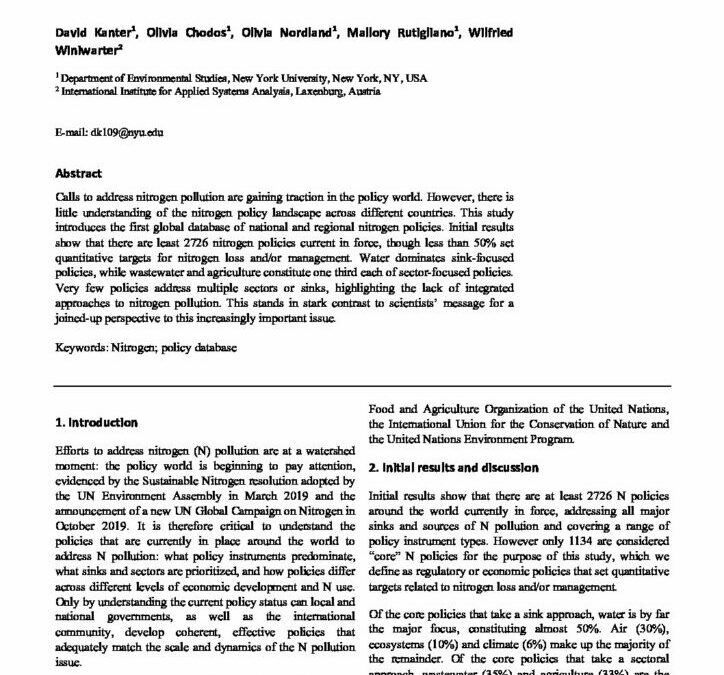The first global nitrogen policy database

Calls to address nitrogen pollution are gaining traction in the policy world. However, there is little understanding of the nitrogen policy landscape across different countries. This study introduces the first global database of national and regional nitrogen policies. Initial results show that there are least 2726 nitrogen policies current in force, though less than 50% set quantitative targets for nitrogen loss and/or management. Water dominates sink-focused policies, while wastewater and agriculture constitute one third each of sector-focused policies. Very few policies address multiple sectors or sinks, highlighting the lack of integrated approaches to nitrogen pollution. This stands in stark contrast to scientists’ message for a joined-up perspective to this increasingly important issue.
Efforts to address nitrogen (N) pollution are at a watershed moment: the policy world is beginning to pay attention, evidenced by the Sustainable Nitrogen resolution adopted by the UN Environment Assembly in March 2019 and the announcement of a new UN Global Campaign on Nitrogen in October 2019. It is therefore critical to understand the policies that are currently in place around the world to address N pollution: what policy instruments predominate, what sinks and sectors are prioritized, and how policies differ across different levels of economic development and N use. Only by understanding the current policy status can local and national governments, as well as the international community, develop coherent, effective policies that adequately match the scale and dynamics of the N pollution issue.
